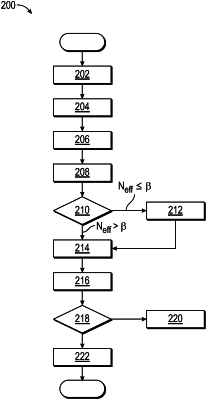| CPC G01S 13/9029 (2013.01) [G01S 13/505 (2013.01); G01S 13/9011 (2013.01); G01S 13/9027 (2019.05); G06V 10/443 (2022.01); G06V 10/62 (2022.01); G06V 10/761 (2022.01)] | 20 Claims |

|
1. A radar anti-spoofing system for an autonomous vehicle, the radar anti-spoofing system comprising:
a plurality of radar sensors that generate a plurality of input detection points representing radio frequency (RF) signals reflected from objects; and
one or more controllers in electronic communication with the plurality of radar sensors, wherein the one or more controllers execute instructions to:
determine a signal to noise ratio (SNR) distance ratio for the plurality of input detection points generated by the plurality of radar sensors, wherein a value of the SNR distance ratio is indicative of an object being a ghost vehicle;
determine importance sampling for each variable that is part of a state variable based on the plurality of input detection points and the SNR distance ratio;
weight the importance sampling for each variable that is part of the state variable;
determine an effective particle number indicating a degree of particle degradation for the importance sampling for each variable that is part of the state variable; and
in response to determining the effective particle number is equal to or less than a predetermined threshold, estimate a ghost position for the ghost vehicle based on the state variable.
|